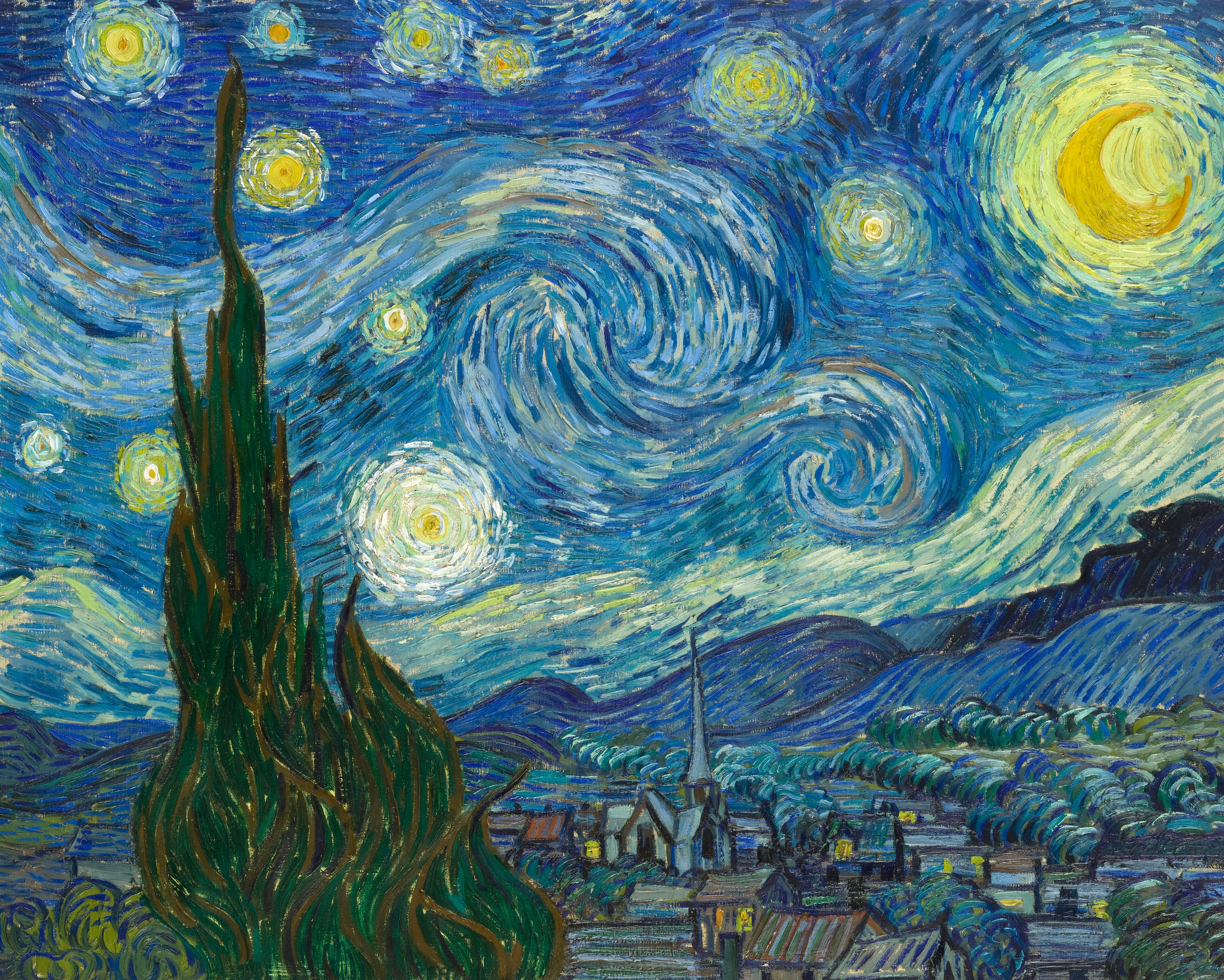
When Vincent van Gogh painted “The Starry Night” 135 years ago, he captured a subjective feeling about the heavens. But, as it turns out, real science is also reflected in the iconic piece, a new study reveals about his brushstrokes.
In 1941, Russian mathematician Andrey Kolmogorov laid the foundation for the modern understanding of turbulence. But a new numerical analysis of what van Gogh had painted more than half a century earlier, published Tuesday in the journal Physics of Fluids, reveals he depicted a very realistic interpretation of turbulent clouds.
“The atmosphere is turbulent. Clouds are complex and chaotic because of this turbulence,” Francois Schmitt, a research professor at the Laboratory of Oceanology and Geosciences in Wimereux in France and co-author of the new paper, told Inverse in an email.

The team was interested, in particular, with the painting’s eddies. An eddy is a circular motion of a fluid, be it water in the ocean or vapor in clouds. It appears because a general motion, like a current, can “pinch off,” according to the National Ocean Service.
Eddies move faster when they are bigger, Kolmogorov’s Law established. In addition, turbulence is self-similar, Schmitt said, meaning many eddies of different sizes are “all present at the same time.” This is demonstrated in the oil-on-canvas painting.
“Van Gogh in his painting could reproduce the turbulence of the clouds. We see several eddies in his painting. A numerical analysis showed it was very realistic as turbulent clouds,” Schmitt said.
As it turns out, the oil in “The Starry Night” has diffused in the painting in a way that turbulence behaves at very small scales, too. Another important part of modern statistics and probability mathematics is the Batchelor regime. It establishes that materials on the order of just 10 to 100 microns in size — for perspective, a human cell is about 30 microns in size — affect turbulent mixing. In the painting, this physics appears thanks to a serendipitous “side-effect” of the oil diffusion, although in “The Starry Night,” the phenomenon looks much larger than on the small scales they appear in the real world.
“The Starry Night” captures the surreal experience of looking up. Plus, perhaps, a deep well of personal observations.
“It reveals a deep and intuitive understanding of natural phenomena,” Yongxiang Huang, study author and researcher at State Key Laboratory of Marine Environmental Science & College of Ocean and Earth Sciences at Xiamen University in China, said in a description of the paper.
“Van Gogh’s precise representation of turbulence might be from studying the movement of clouds and the atmosphere or an innate sense of how to capture the dynamism of the sky,” Huang added.
“The Starry Night” is a crossover of the senses, Schmitt said. The brushstrokes and the eddy scales creates a visual sensation that transforms into the feeling of “the wind turning around us.”







